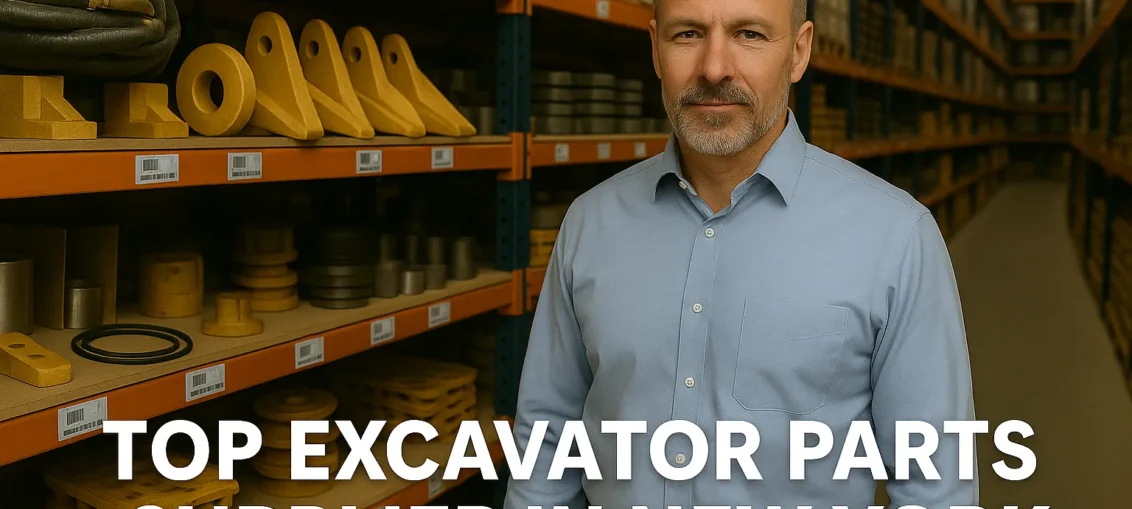
If your excavator goes down, progress stops with it. In a fast-paced city like New York, that kind of delay doesn’t just slow things down. It puts your schedule, your budget, and your reputation at risk.
At Bites Off Broadway, we understand the pressure. You need the right part, fast, from a supplier who knows what they’re doing. That means having stock on hand, checking for fit, and making sure everything ships out without guesswork or back-and-forth emails.
You might be wondering how to avoid the usual headaches: missed deliveries, wrong sizes, or suppliers who disappear after the sale. That’s exactly what this guide is here to help you with.
We’ll cover:
- What separates dependable suppliers from risky ones
- The parts that construction crews replace most often
- Real examples of how we keep projects moving across New York
Let’s get started.
What to do when your excavator breaks down
When your excavator stops working, the fastest way to regain control is by acting with a plan. These three steps help you avoid common delays and get back on track faster.
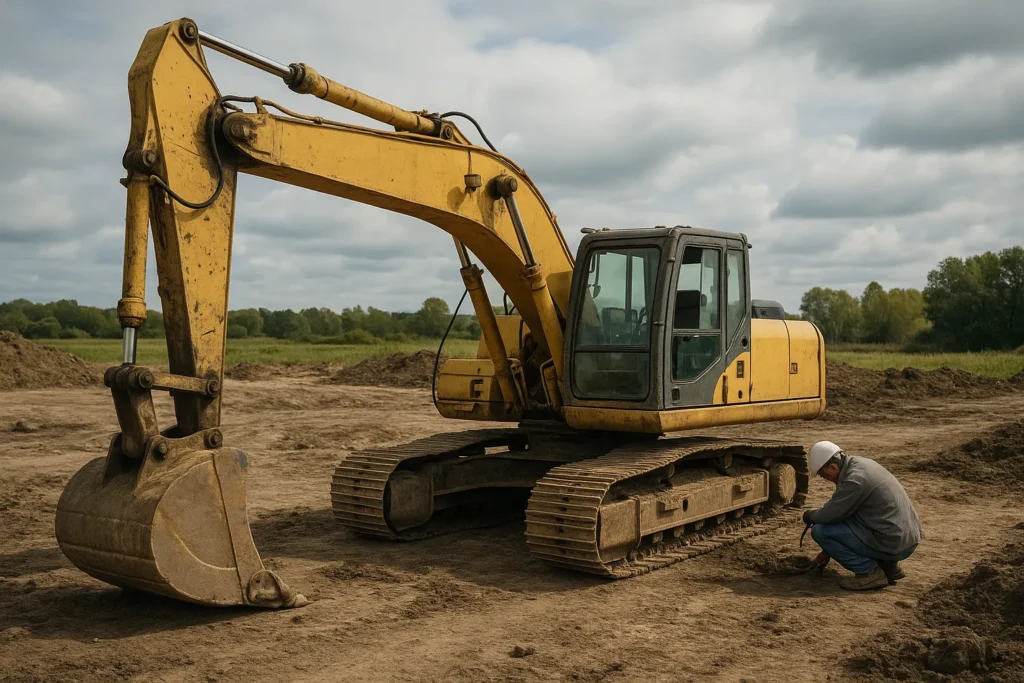
Step 1: Confirm the exact part
Ordering the wrong part is one of the top causes of extended downtime. Before you place any order:
- Identify your machine’s make, model, and serial number
- Check for wear, leaks, or visible damage
- Take a photo and get a second opinion if there’s any doubt
If you’re confused, our team can help verify compatibility from a quick photo or serial number.
Step 2: Choose a supplier with stock on hand
Fast shipping only helps if the part is actually available. Prioritize suppliers who:
- Keep your part in the local or regional inventory
- Offer delivery across New York in 24 hours or less
- Have a direct phone line with knowledgeable support
If a supplier can’t confirm availability quickly, it might be time to move on.
Step 3: Set up future readiness
Today’s issue is a chance to plan ahead. Build a relationship with a supplier who:
- Saves your past orders and machine history
- Flags recurring wear parts based on usage
- Helps you solve problems without endless follow-ups
Getting through a breakdown is one thing. Preventing the next one starts with who you trust.
Next, we’ll walk through what separates reliable parts suppliers from the ones that slow you down.
How to choose a supplier who saves you time and money
Working with the right supplier can reduce downtime, lower costs, and make your entire process smoother. These are the traits to look for when you’re deciding who to trust with your excavator parts.

Inventory comes first
If the part isn’t available, the rest doesn’t matter. Start by checking whether the supplier:
- Stocks the specific parts your machines use
- Has a local or regional distribution to reach your site quickly
- Can confirm availability with a single phone call or message
Delays often happen because suppliers wait to order parts after you do. You wouldn’t want to lose that time.
Fit and compatibility checks
Even with the right part number, mistakes happen. A reliable supplier should always:
- Ask for your machine’s serial number when needed
- Verify dimensions or configuration on high-wear components
- Flag possible mismatches before shipping anything out
This type of check saves you from discovering a problem after it’s too late.
Accessible and skilled support
If you’ve ever called a supplier and felt like you knew more than they did, you’re not alone. The best suppliers:
- Have staff who know how construction equipment works
- Help you narrow down options quickly
- Offer clear answers without needing multiple follow-ups
At Bites Off Broadway, our parts team works directly with contractors every day. We’ve helped match parts just from photos, walked new buyers through compatibility checks, and arranged pickups on short notice. You should expect that level of support from a real supply partner.
What excavator parts break first
Rubber tracks, final drives, and hydraulic hoses are the most common parts to wear out first on an excavator.
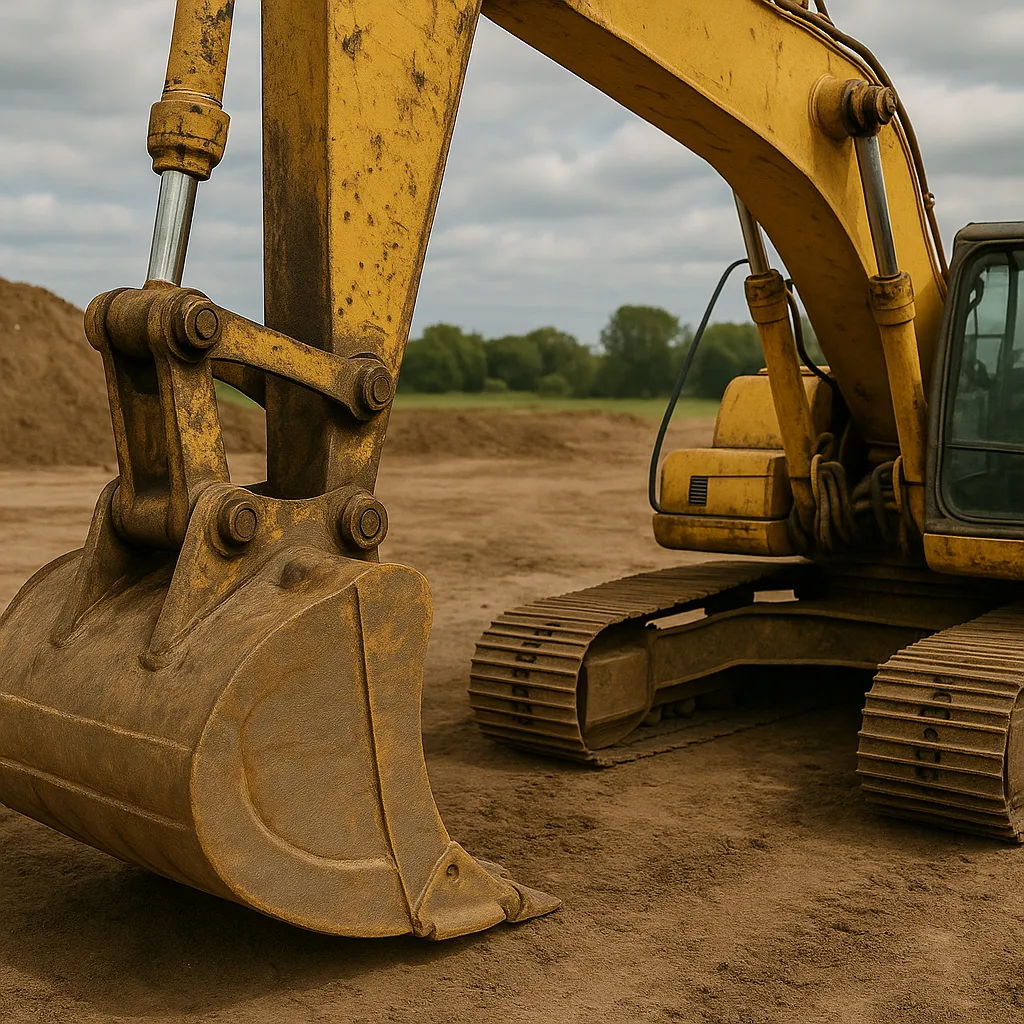
These components handle the machine’s movement, balance, and control. Under constant pressure and rough conditions, they wear out faster than others. If you operate in tight, high-use environments like job sites across New York, this wear shows up even sooner.
How to tell when it’s time to replace them
Spotting wear early can save you thousands. Letting a small issue slide until something snaps could cost you a full day or more of downtime. We’ve seen crews sidelined for a week over a failure that could have been caught during a routine inspection.
Now, we’ll walk you through how to catch issues before they become expensive setbacks. You’ll learn what to look for in your undercarriage, final drive, and hydraulic system, and what those signs mean.
Start with the undercarriage
If you’re using rubber tracks, start here. Look for:
- Cracks or chunks missing from the tread
- Exposed steel cables beneath the rubber
- Loose fit or slipping under movement
These signs tell you the track is nearing failure. When that happens, it can stop your machine and throw off your entire timeline.
For more help, check out our inspection guide: What to Inspect When Buying a Used Excavator.
Keep an eye on the final drive
The final drive is your power transfer point. When it starts to wear out, you’ll notice:
- Oil leaks around sprockets
- Unusual vibration
- Sluggish torque or power loss
We recommend inspections every 1,000 to 1,500 hours, especially if your site is uneven or high-traffic.
Don’t overlook hydraulics
Your hydraulics control every major movement. If they start to degrade, your machine loses strength and precision.
Watch for:
- Jerky or slow arm and boom movement
- Visible seepage along hoses or fittings
- Discolored or frothy fluid in the reservoir
We’ve flagged major issues from just a fluid check. One customer avoided a full cylinder replacement by noticing a change in oil color during a routine refill.
In the next section, we’ll move from the parts themselves to the kind of service and support that makes a supplier worth sticking with, not just for one order but over the long term.
What makes a good excavator parts supplier
A reliable excavator parts supplier keeps your crew moving, minimizes costly downtime, and delivers support when you need it, not after things go wrong.
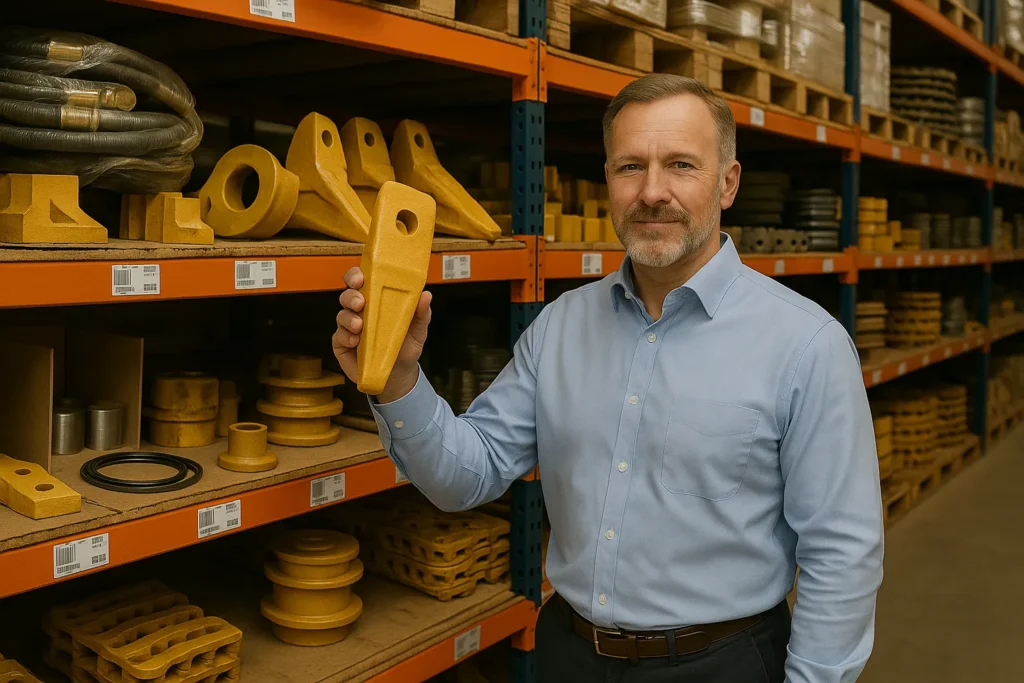
When your machine is out of action, time matters. You need someone who knows what they’re doing and takes responsibility for doing it right. Let’s check out how to choose the right supplier.
What to expect from the right supplier
Here’s what you should expect from the right supplier:
- Parts that meet or exceed OEM specifications
- Inventory that matches the machines you run
- Fast turnaround and responsive delivery across New York
- Real people who understand your equipment and your schedule
We’ve worked with crews who lost days waiting on callbacks, only to find out the part was never in stock. That does not happen when your supplier tracks demand, understands their product line, and communicates clearly.
The Association of Equipment Manufacturers reports that equipment manufacturing supports over 2.3 million jobs and contributes more than $316 billion to the U.S. economy. The statistics prove how dependable suppliers are to the industry.
If your supplier does not help you plan, verify fit, or follow through after delivery, it is time to consider a better option.
How to choose between OEM, aftermarket, and rebuilt parts
Choosing the right type of part, such as OEM, aftermarket, or rebuilt, can save you time, money, and unnecessary frustration. The best option depends on your machine’s age, how urgently you need the repair, and how much risk you can afford to take.
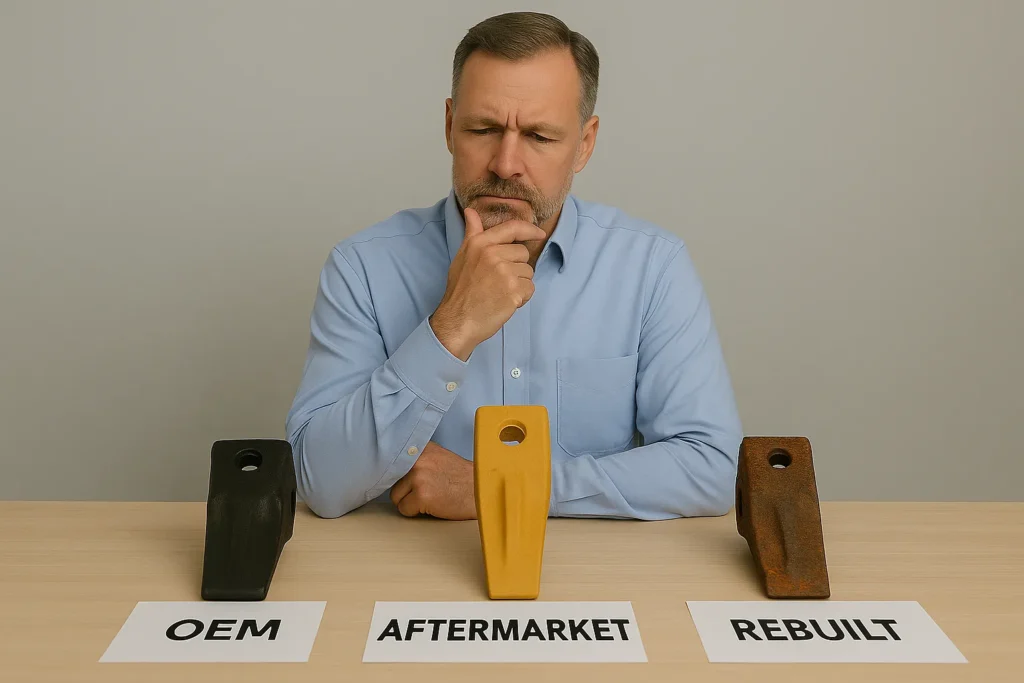
OEM parts: best for exact fit and warranty protection
OEM (Original Equipment Manufacturer) parts come from the same company that built your equipment. They typically offer:
- Guaranteed compatibility and performance
- Fewer issues during installation
- Stronger warranty coverage
We recommend OEM parts when your equipment is still under warranty or when the component plays a critical role, like electronics or engine systems.
Aftermarket parts: a smart choice for high-wear items
Aftermarket parts are made by third-party manufacturers. With the right supplier, they can match OEM performance for less cost. Use them when:
- You are replacing high-turnover parts like filters, rubber tracks, or pins
- Cost control matters more than brand labels
- You trust your supplier to deliver quality
According to Verified Market Research, the heavy equipment spare parts market is expected to grow from $168 billion in 2023 to $297 billion by 2031, showing increasing trust in aftermarket parts.
Rebuilt parts: practical for budget-conscious repairs
Rebuilt or remanufactured parts are previously used components restored to working condition. They are best for:
- Machines nearing retirement
- Projects with tight budgets
- Crews who can inspect or verify rebuild quality before use
We have seen many customers extend the life of secondary machines using rebuilt parts, especially for less intensive work. Just be cautious with rebuilt components that carry a high load without proper inspection records.
How to make sure you get the right part the first time
Start by getting everything you need ready before contacting your supplier. This saves you time, avoids delays, and helps the parts team get straight to the right solution.

What to have on hand before reaching out
We cannot count how many calls we have taken where just one missing detail turned into hours of back and forth. Here is what you will want to prepare:
- Machine make, model, and year
- Serial number or VIN
- Description of the issue or visible wear
- Photos of the part, if possible
- Previous part number or invoice if this is a replacement
Sharing this upfront lets your supplier match inventory faster and reduces the chance of receiving the wrong component.
How to verify compatibility
Once you have contacted the supplier, do not assume every part will be a plug-and-play fit. Ask these questions:
- Has this part been fitted on my specific model before?
- Are there any known revisions or updates for my machine series?
- Can someone on your team double-check the dimensions or connection points?
We have seen it all, from swapped part numbers to design changes that do not show up in basic catalogs. A few minutes confirming this now beats hours of disassembly and returns later.
The best suppliers are proactive. They will ask questions, clarify use cases, and point out if there is a better fit. If you feel like you are doing all the work, it is a sign to look elsewhere.
Coming up next, we will show you how to wrap all of this into a dependable support system and what to expect after the sale.
Get reliable excavator parts with expert support
Finding and ordering excavator parts should be clear, quick, and accurate. If a part has failed, if the track is worn, or if compatibility is uncertain, the right supplier can help you fix it without wasting time or money.
At Bites Off Broadway, we keep things simple. Our team works directly with contractors, mechanics, and site managers across New York to get the right part to the right place, fast. No long forms. No runaround. Just straight answers and proven parts.
If you are comparing OEM, aftermarket, or rebuilt options and want help deciding, reach out. We can guide you through the decision, confirm fit, and make sure you get exactly what you need the first time.
To learn more about how we support construction crews and keep projects moving, visit Bites Off Broadway.
You already have enough on your plate. Let us handle the parts.
